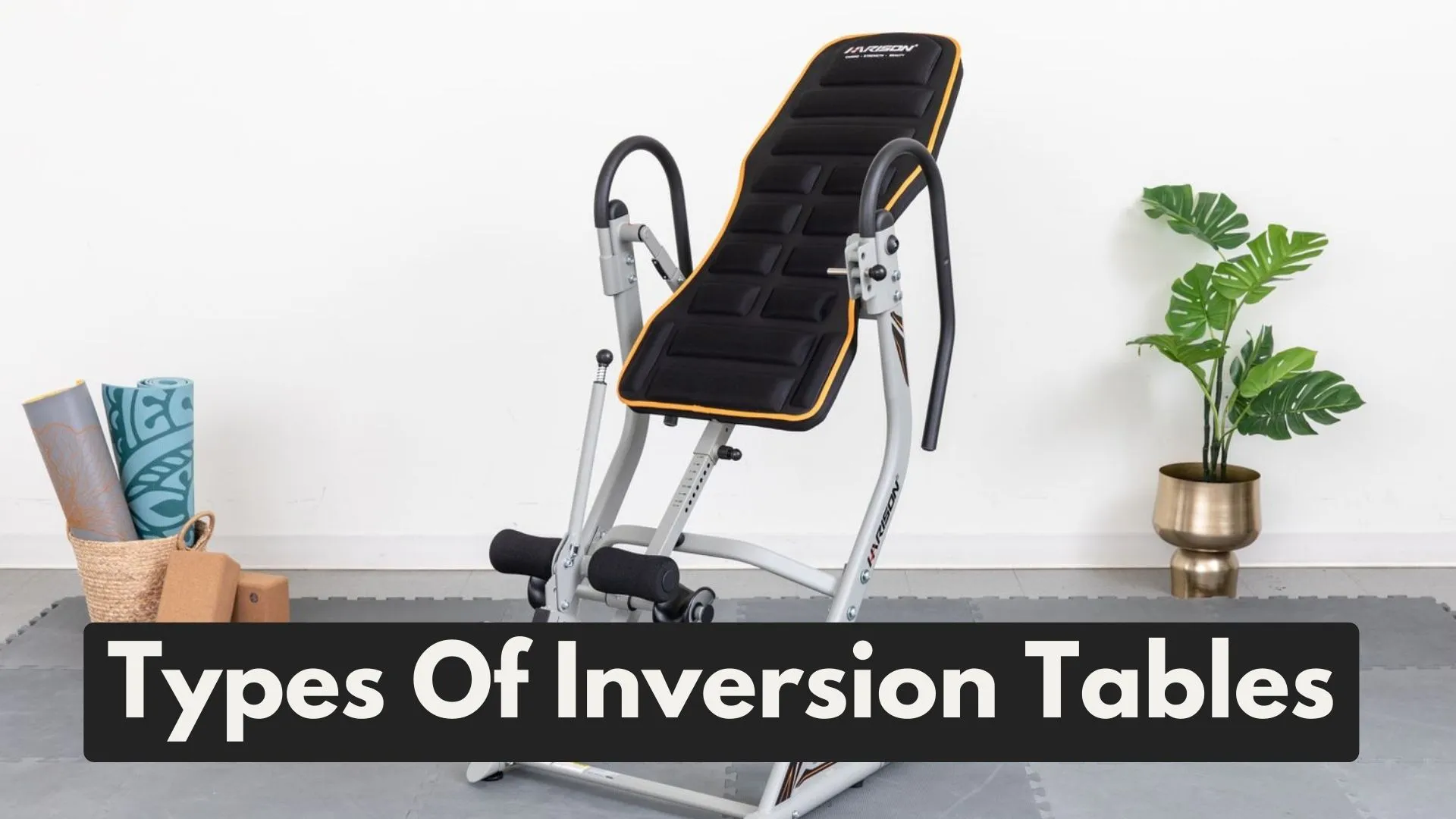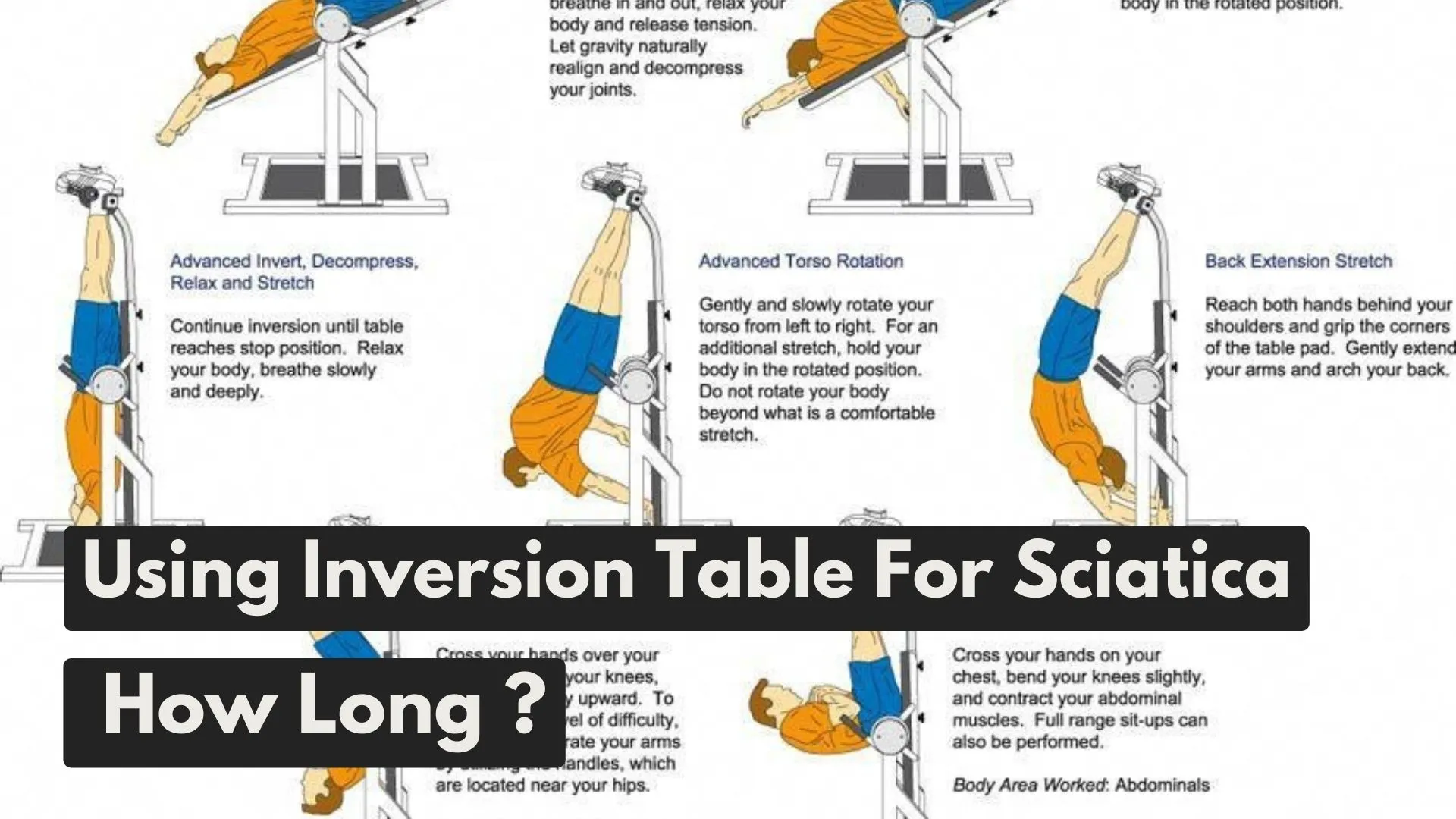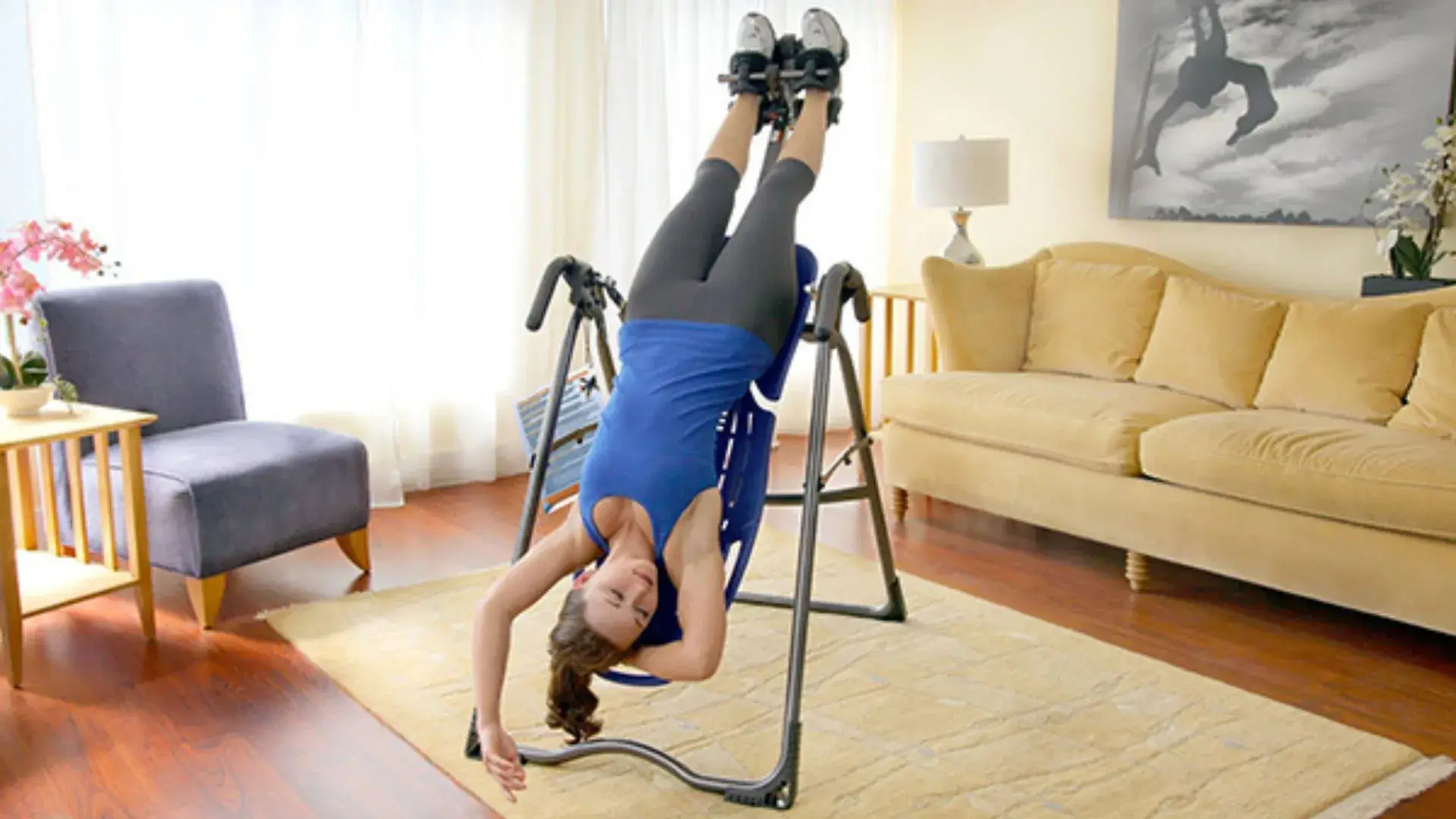Sciatica is a painful condition that develops when the sciatic nerve is irritated or compressed. This nerve travels down the back of each leg, beginning in the lower back, passing through the buttocks, and ending in the thighs.
Pain, numbness, tingling, and weakness in the affected leg are just a few of the incapacitating symptoms of sciatica.
The sciatica inversion table is one of the many available treatments. In fact, inversion therapy at home can help you with this, in case of mild conditions.
In this article, we’ll take a closer look at what sciatica inversion tables are, how they work, and their potential benefits.
Key Takeaway :
- Sciatica pain relief and overall spine health can both be achieved with inversion table therapy.
- Prior to beginning inversion table therapy, it’s crucial to speak with your doctor and select an inversion table that is suitable for your needs, high-quality, and sturdy.
- Work your way up to a steeper angle of inversion over time by beginning with a low angle. To prevent injury, use proper technique and pay attention to your body.
- Limit your sessions to 1-2 times each day, begin with brief sessions, and then gradually lengthen them.
- For best results, combine inversion table therapy with other therapies like physical therapy, chiropractic adjustments, or massage therapy.
What Is a Sciatica Inversion Table ?
In order to help alleviate the discomfort associated with sciatica, a sciatica inversion table is a piece of specialised medical equipment.
The user is able to hang from it in an inverted position, which assists in relieving pressure on the spine and stretching the muscles in the lower back. This is how it functions.
When this is done, the pressure that is being placed on the sciatic nerve is reduced, which may help to alleviate some of the associated pain and discomfort.
How Does a Sciatica Inversion Table Work?
When using an inversion table, the user lies down on a padded table and secures their feet to the bottom of the table.
They then slowly invert the table, controlling the degree of inversion with their own body weight. Most tables allow for a full 180-degree inversion, which can be adjusted to the user’s comfort level.
The pull of gravity helps to stretch the spine and relieve pressure on the sciatic nerve as the user hangs upside down. This might offer quick relief from pain and discomfort.
Over time, regular use of a sciatica inversion table can help to improve the flexibility of the spine, strengthen the muscles in the lower back, and improve overall posture.
Potential Benefits of Using a Sciatica Inversion Table
There are many potential benefits to using an inversion table.
Here are just a few:
Pain Relief
A sciatica inversion table is primarily useful for relieving pain. The user may experience immediate relief from pain and discomfort as a result of the decompression of the spine and the reduction in pressure placed on the sciatic nerve.
Improved Flexibility
The use of a sciatica inversion table on a regular basis can, over the course of time, help to improve the flexibility of the spine, making it easier to carry out activities of daily living.
Improved Posture
Sciatica is frequently brought on by poor posture. Users can improve their posture and lower their risk of developing sciatica in the future by using a sciatica inversion table on a regular basis.
Strengthened Muscles
When it comes to providing support for the spine, the muscles in the lower back are crucial. Using an inversion table for exercise and workouts on a regular basis can help to strengthen these muscles, which in turn lowers the risk of injury and improves the health of the back as a whole.
Improved Circulation
Blood flow to the brain is increased while hanging upside down on a sciatica inversion table. As a result, this may help to improve circulation all over the body and promote better health.
Best Sciatica Inversion Table And Other Products To Get You Quick Relief From Sciatica
Here are some of the best devices and inversion tables to consider for Sciatica-

Back-LIF Pro Device
- Stretcher & Spine Decompression
- Sturdy Upright Inversion Table
- Safe & Portable Spine Stretcher
- Adjustable Traction Device
- Price: $49

Tandcf Back Stretcher
- Pain Relief From Sciatica, Lumbar & Back
- Adjustable Design, Meet Different Needs
- Multi-Level Massager
- Lightweight & Portable
- Price: $16.99

Body Vision ABMI
- Acupressure Beaded Massage Inversion Table
- Inversion Table For Sciatica
- Relieves Back Pressure and Muscle Aches
- Adjustable Head Rest
- Price: $184.92

Body Rhythm Workout
- Multifunctional Workout Chair
- Inversion Tables for Inversion Therapy
- 3 in 1 Workout Chair
- Actual Price: $119.99
- Current Price: $129.99

Fisher Traction
- Back Pain & Sciatica Pain Relief Device
- Portable Mobile & Easy To Use
- Traction Device
- Actual Price: $119.99
- Current Price: $99.99
Inversion Table Therapy For Sciatica – Guide
Speak with your healthcare professional: Before beginning inversion table therapy, as with any new therapy or treatment, it’s important to speak with your healthcare provider.
They can assist in determining whether this therapy is suitable for your particular sciatica case.
Choose The Right Inversion Table
The market is filled with a wide variety of inversion table types and models, so make the best choice possible.
Choose a product that is well-made, reliable, and simple to use. A comfortable backrest, adjustable height, and ankle supports are a few other features you might want to take into account.
Start With A Low Angle Of Inversion
If you’re new to inversion table therapy, start with a low angle of inversion (like 20 to 30 degrees) and gradually increase it over time to a steeper angle.
Use The Right Technique
Always carefully read and adhere to the manufacturer’s instructions. Keep your arms at your sides or overhead, secure your ankles in the ankle supports, and raise and lower yourself into the inverted position slowly.
Your sessions should be kept to a minimum because inversion table therapy can help with sciatica pain relief but it’s important not to overdo it.
As your body becomes more accustomed to the therapy, start with brief sessions (like 1-2 minutes) and gradually lengthen them. Keep your sessions to no more than twice a day.
Consider checking out my guide on “How Long Should I Use An Inversion Table For Sciatica“. This will help you avoid confusion.
Listen And Observe Your Body
Keep an eye on how your body feels both during and after using an inversion table. Stop the therapy right away and consult your doctor if you feel any pain, discomfort, or dizziness.
Watching Video Guide By Gordon Physical Therapy –
Think About Combining Other Therapies With Inversion Table Therapy
Although using an inversion table to treat sciatica pain can be helpful, other treatments like physical therapy, chiropractic adjustments, or massage therapy may help it work even better.
Overall, using an inversion table can be a good way to relieve sciatica pain, but it’s important to use this therapy carefully and under a doctor’s supervision.
Inversion table therapy can be a safe and efficient component of your sciatica treatment plan with the right technique and close supervision.
What Are Sciatica Inversion Table Exercise ?
Sciatica Inversion Table Exercise may be an efficient method of alleviating the pain associated with sciatica and enhancing the general health of the spine. You can try the following inversion table exercises:
Inverted Squats
While inverted, bring your knees up towards your chest and then slowly lower them back down. This exercise can help strengthen your abdominal muscles and improve your posture.
Inverted Crunches
Your abdominal muscles can be strengthened, and your posture can be improved, with the help of this exercise.
Inverted Twists
While you are inverted, rotate your hips from side to side, controlling the movement with the muscles in your core. You may notice increased spinal mobility and a reduction in tension in your lower back after performing this exercise.
Inverted Back Extensions
Lift your torso up slightly while you are inverted, and then slowly lower it back down. You can strengthen your back muscles and improve your posture by performing this exercise.
Inverted Side Stretches
Reach one arm up towards the ceiling while inverted, and then slowly lean to the opposite side. Hold for a few seconds before switching sides.
You can improve your flexibility and the range of motion in your side muscles by performing this exercise.
Remember to begin with a shallow angle of inversion and work your way up to a more acute angle over time. To prevent injury, use proper technique and pay attention to your body.
In addition, in order to achieve the best possible outcomes, it is critical to combine inversion table exercises with other forms of treatment, such as physical therapy, chiropractic care, or massage therapy.
Do’s And Don’t
You must have clear knowledge about when not to use an inversion table. So, I advise you to learn more before you start with the inversion table.
Do’s
Don’t
>>> An Ultimate Guide To Inversion Table <<<
FAQs Related Sciatica Inversion Table
Q1. Can anyone use a sciatica inversion table?
Yes, most people can use a sciatica inversion table. However, it is important to consult with a healthcare professional before beginning any new treatment.
Q2. How often should I use a sciatica inversion table?
The frequency of use will depend on the individual and their level of pain. It is best to start slowly, with short sessions, and gradually increase the length of time as you become more comfortable.
Q3. Are there any risks associated with using a sciatica inversion table?
Inversion tables for sciatica therapy have risks. Hypertension is a major risk. Hanging upside down makes your heart work harder to pump blood against gravity, raising blood pressure. High blood pressure and heart disease can be dangerous. Before starting inversion table therapy, consult your doctor and monitor your blood pressure regularly.














![Inversion Table Exercise & Workout Therapy Instruction [ Must-Read Guide ] inversiontablehub.com](https://inversiontablehub.com/wp-content/uploads/2023/02/Red-and-Black-Dark-Gamer-Sports-YouTube-Outro-18.webp)

Leave a Reply